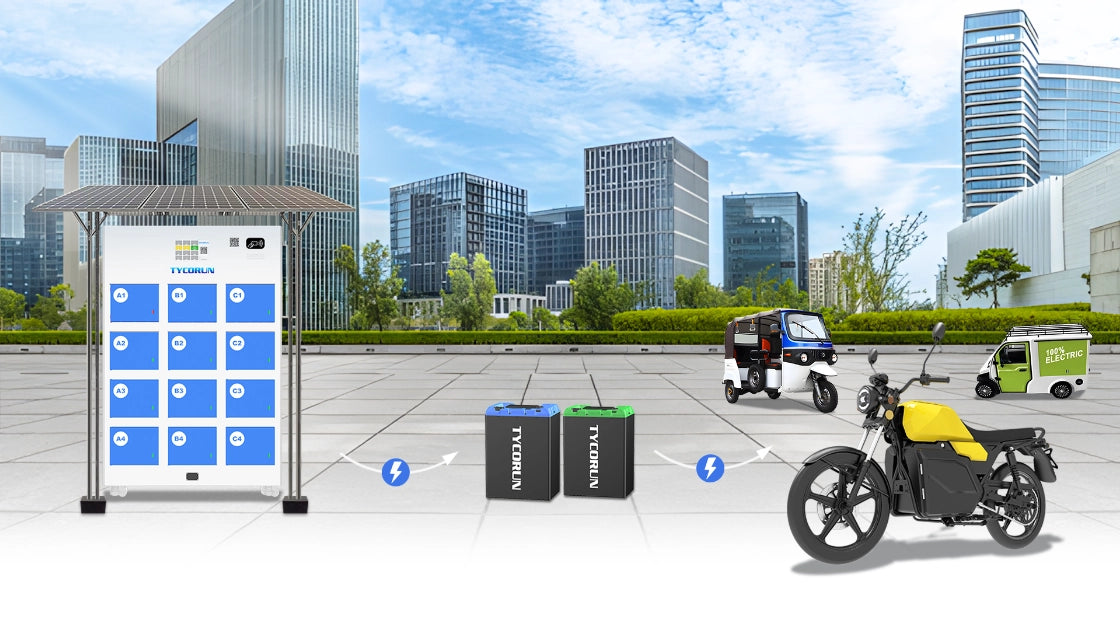
The passage explains whether you can take lithium ion batteries on airplanes, including basic rules, capacity limits, and safety precautions.
Main content:
- Advantages of Lithium Ion Batteries
- Potential Risks of Lithium Batteries
- Pre-Travel Preparations
- Air Transport Regulations
- Can Devices Containing Lithium Batteries Be Carried on Planes?
- Safe Packaging Requirements for Lithium Batteries
- Emergency Procedures for Battery Heat or Smoke During Flight
- Can Devices Be Charged On Planes?
- Conclusion
Traveling with electronic devices raises an important question: can you take lithium ion batteries on airplanes? These batteries, widely used in smartphones, laptops, cameras, and portable power banks, offer battery high energy density and lightweight design. However, their potential risks, such as overheating or short-circuiting, require passengers to follow strict airline regulations and safety precautions before boarding.
Advantages of Lithium Ion Batteries
Due to their outstanding performance, lithium batteries have been widely used in energy storage, electric vehicles, and consumer electronics. First, lithium batteries have a high energy density. For the same volume or weight, they can store significantly more energy than traditional lead-acid batteries, meaning devices can have longer lithium-ion battery life in a lighter and smaller package.
Lithium batteries offer the advantage of being lightweight. It's worth noting that, precisely because of their high energy density and wide range of applications, lithium batteries have received particular attention in air transportation.
Potential Risks of Lithium Batteries

Overheating and Short-Circuit Risks
If a lithium battery overheats, short-circuits, or experiences internal structural damage during charging and discharging, it can cause fire or even explosion. These risks are particularly acute under high temperatures, high pressures, or external impacts. Due to the high energy density of lithium batteries, thermal runaway can have serious consequences.
Hazards Caused by Battery Damage
If a lithium battery swells, ruptures, or leaks electrolyte, it not only affects battery performance but can also pose a risk to the surrounding environment and personnel. This is especially true in confined spaces or at high altitudes, where post-accident control and handling are more difficult, thus increasing the associated risks.
Risks of Improper Storage and Transportation
If large-capacity spare lithium batteries are improperly stored or transported, they can pose safety risks due to environmental fluctuations. For example, in high temperatures, direct sunlight, or collisions, batteries are prone to thermal runaway, causing fire or even explosion. For this reason, lithium batteries are subject to significant regulatory scrutiny during transportation, particularly in air transport.
Pre-Travel Preparations
Before traveling with lithium batteries, thorough preparation is crucial for ensuring safety and a smooth boarding experience. First, carefully inspect the battery to ensure the casing is free of damage, swelling, leakage, or other abnormalities. If any signs of damage are observed, immediately discontinue use and replace the battery to avoid safety issues during travel.
Also, it's important to understand the airline's regulations regarding lithium batteries in advance. Different airlines have different restrictions on the capacity, quantity, and carriage of lithium batteries, such as the distinction between carry-on and checked baggage, power limits, and whether additional declarations are required. Failure to understand these regulations may result in restrictions or even denial of carriage during security checks or boarding.
Air Transport Regulations

Due to the high energy density and potential safety risks of lithium batteries, the International Civil Aviation Organization (ICAO), the International Air Transport Association (IATA), and various national civil aviation authorities have established specific regulations for their carriage and transportation.
When planning your trip, it’s important to know can you take lithium ion batteries on airplanes, especially if you have spare batteries for professional cameras or drones. Carry-on and checked baggage requirements also vary based on the battery's watt-hour (Wh) rating.
Carry-On
Rated Capacity ≤ 100 Wh
For lithium batteries with a rated capacity of no more than 100 Wh, airlines generally allow passengers to carry them directly on board without prior declaration. Such batteries are mostly used in portable electronic devices such as mobile phones, laptops, tablets, drones, and small cameras. Although no additional approval is required, it is still necessary to ensure that the device should be turned off or in flight mode during transportation to avoid accidental activation.
Rated Capacity 100–160 Wh
For lithium batteries with a rated capacity between 100 Wh and 160 Wh, airline approval must be obtained before boarding. Such batteries are mostly used in professional camera equipment, high-power laptops, medical equipment, and other equipment. Airlines usually have restrictions on the number of batteries that can be carried, and generally allow passengers to carry no more than 2 spare batteries.
Checked Baggage
According to the requirements of most airlines and international civil aviation regulations, spare lithium batteries are strictly prohibited from being placed directly in checked baggage. Lithium is a very unstable metal that can easily generate high lithium ion battery operating temperature and even spontaneously combust when subjected to collisions and pressure.
If lithium batteries are placed in checked luggage, the cramped and impacted luggage in the cargo hold can easily cause spontaneous combustion, posing a serious safety threat to the aircraft. If a carry-on lithium battery spontaneously combusts in the cabin, the crew can quickly detect and address the situation.
Can Devices Containing Lithium Batteries Be Carried on Planes?

Passengers can carry on board most electronic devices with built-in lithium batteries, such as mobile phones, laptops, tablets, cameras, and portable electronics. These devices are generally considered low-risk items for air transportation, but they must meet relevant safety requirements. First, the rated capacity of the battery contained in the device must not exceed the airline's specified limit (usually no more than 100Wh).
If this exceeds the upper limit, additional declaration or approval may be required. All devices must be turned off or in airplane mode during takeoff and flight to prevent signal interference or safety hazards caused by battery overheating. Passengers are prohibited from removing or replacing batteries without authorization during flight, and are prohibited from carrying exposed or modified battery cells.
Safe Packaging Requirements for Lithium Batteries
- Insulate the battery terminals. Insulating tape can be used to seal the positive and negative terminals of the battery to prevent short circuits caused by contact with other objects during transportation.
- Avoid contact between battery terminals and metal objects, such as keys, coins, and charging cables. Contact with these conductive objects can cause a short circuit and rapidly heat up, posing a serious safety hazard.
- All spare lithium batteries must be individually packaged. It is recommended that they be placed in anti-static plastic bags, original packaging boxes, or specialized fireproof bags to prevent collision or friction between multiple batteries.
Emergency Procedures for Battery Heat or Smoke During Flight
If a device or battery exhibits abnormalities on board (such as heat, smoke, or an unusual odor):
Passengers should immediately stop using the device and disconnect it from the power source if possible (e.g., unplug the charging cable or turn off the device). Furthermore, notify the crew immediately. Do not disassemble, dispose of, or attempt to extinguish the fire with water, as water contact with certain lithium battery materials may cause further reactions or even explosion.
Crew members are typically equipped with specialized fire-fighting equipment, fire bags, or fire blankets, and will isolate and dispose of the faulty battery according to standard procedures to prevent the spread of fire or smoke.
While waiting for the crew to handle the situation, passengers should remain calm and avoid placing other electronic devices near the affected device to prevent heat transfer and a chain reaction. If smoke or a small fire occurs, the crew may use dry powder fire extinguishers or fire-resistant bags to quickly isolate the device to ensure cabin air quality and passenger safety.
Can Devices Be Charged On Planes?

USB Ports
Most commercial aircraft are equipped with USB-A or USB-C ports in economy, business, and even first class. These ports typically output between 1A and 2.5A, providing stable power for small devices such as mobile phones, tablets, e-books, and Bluetooth headsets. Passengers are advised to use original or high-quality data cables to ensure efficient charging and reduce safety risks.
AC Outlets
For passengers who need to charge laptops or cameras, some medium- and long-haul or international flights also provide AC outlets. These outlets are typically located on the side or under the seat, and run at 110V or 220V, allowing them to directly power high-power devices. However, before use, ensure the plug shape and voltage are compatible to prevent damage to your device.
Portable Charging Stations or Shared Outlets
Some newer aircraft also feature portable charging stations or shared outlets in common areas of the cabin. Passengers can charge their devices during non-turbulent times, but they should be careful to keep their belongings safe.
It's important to note that during takeoff and landing, and when the crew issues safety instructions, passengers should suspend the use of all charging devices to ensure flight safety. If the battery or device exhibits abnormal heat or smoke during charging, immediately unplug it and notify the flight attendant, who will then handle it professionally.
Conclusion
Knowing can you take lithium ion batteries on airplanes is essential for safe travel. By checking battery condition, adhering to airline limits, using proper insulation and packaging, and following in-flight precautions, passengers can minimize risks.
Related articles: lithium battery technology, battery materials, Which Lithium Batteries Are Dangerous?















